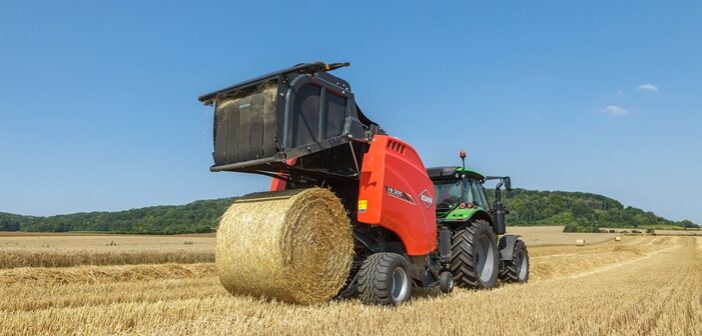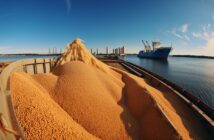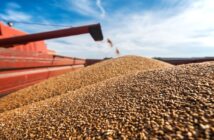For those with easy access to markets, firm prices and sound agronomic reasons support the case for baling wheat and barley straw. However, Hutchinsons fertiliser and crop nutrition specialist Rob Jewers, says such benefits must be weighed against other factors.
These include the compaction risk from increased traffic, any impact the timeliness of straw removal will have on establishing following crops, and the impact of lost organic matter on soil health and structure.
Another important consideration is the value of key nutrients removed within the straw, principally phosphate and potash, he says.
Figures from the AHDB Nutrient Management Guide (RB209) estimate a 10 t/ha wheat crop removes around 5 kg/ha of phosphate and 50 kg/ha of potash in straw (compared with 65 kg/ha of phosphate and 55 kg/ha potash in grain), while for an 8 t/ha winter barley crop, removal in straw is slightly less at 4 kg/ha and 40 kg/ha respectively (64 kg/ha and 44 kg/ha in grain).
“The potash content of straw can vary substantially depending on the amount of water availability during crop maturity and straw baling,” notes Mr Jewers. “It can, therefore, be worthwhile determining the nutrient content of representative straw samples by laboratory analysis.”
Replace lost nutrients
If growers do decide to bale, Mr Jewers says some of the money made from straw sales should be reinvested back into replacing the nutrition removed.
“Phosphate fertiliser is usually best applied to seedbeds ahead of, or at planting,” he advises. This is often as organic manure applications, or broadcast in traditional fertilisers, such as DAP and TSP.
But microgranular or liquid placement fertilisers are increasingly popular, and can deliver significant benefits to rooting and early crop vigour, he says. “Placement fertilisers are applied in much smaller, concentrated quantities than traditional fertilisers and are therefore highly efficient and cost effective.”
Indeed, trials at Helix East Anglia in 2022, showed yield responses of 0.8 t/ha and 0.6 t/ha from using the placement fertilisers Crystal Green and Primary-P over an untreated control.
For potassium, Mr Jewers says that although crops do require large amounts through the season for optimum growth – potentially more than 300 kg/ha in a high yielding crop – uptake usually peaks during late flowering, before much of the potassium is returned to the soil as crops senesce.
“In order to maintain an adequate supply of K through the peak uptake period, the soil needs to be able to store and release exchangeable K into the soil solution. A good measure of the soil’s ability to do this is its cation exchange capacity (CEC).”
Clay and organic matter content have a significant impact on soil CEC, he adds. “A soil with over 5% organic matter, or equally, over 5% clay content, will lose little K to leaching, whereas a sandy soil with low CEC will allow K to move down the soil profile with excess rainfall.
“Soils with low indices and low CEC should have K applied annually. This should be applied in the spring before peak uptake by the plant.”
To fully understand the P & K requirements of your soils, Mr Jewers recommends having in-depth soil analysis carried out, such as the Gold Healthy Soils test, or Terramap high definition scanning – see https://healthysoils.co.uk.




